Why Boston’s top Luxury Real Estate Advisors Are Turning to Architectural Design Build for Their Clients.

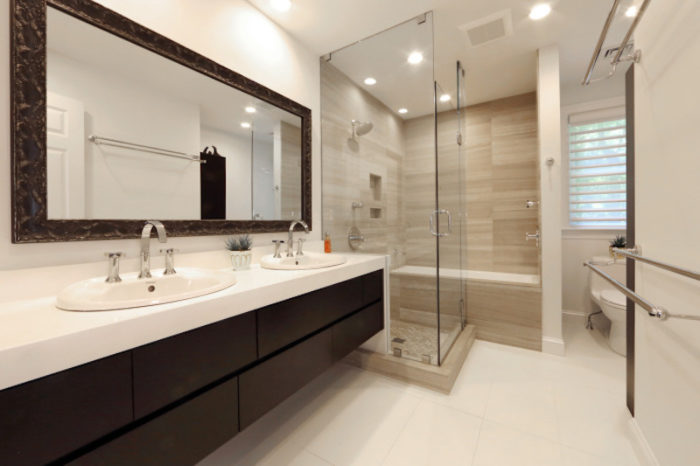
By David Supple, Tufts Architecture Graduate.
NEDC CEO.
Why are Boston’s top Real Estate Advisors turning to Architectural Design Build?
The answer is simple–Boston is a thought leader in Real Estate decision making and Architectural Design Build is the future of innovative home creation.
Boston is a leading city and trendsetter in the United States on multiple fronts, from Finance and Real Estate to Tech and Medical Innovation–ideas and technology flow outward. I’m going to give you an overview of Boston here and then discuss the planning and build approach Boston’s leading Real Estate Advisors are turning to and why.
Boston arguably could be considered the birthplace and genus of the United States–an origin point as regards the formation of the Colonies, their evolution into these United States, and a true hub and generation point of culture, art and commerce. Boston was both a receipt point of old money from England and a generation point for the creation of new wealth and fortunes as the country was forged in the 17th and 18th centuries. European culture and Classic architecture blended with an innovative style, vibe, and cultural dynamic all of its own. Boston and Massachusetts served as the platform and origin point from which these United States were forged and began to evolve and expand.
The United States original institutions of higher learning were forged in Boston.
Original institutions of law and art came together and have crafted the culture through which Boston has evolved–a culture built on resolution, intelligence, and hard work. With an appreciation for family, culture, and the varied joys life can bring–like the Red Sox winning the World Series. Or Tom Brady being Tom Brady.
Today Boston is home to some of the wealthiest and most desirable neighborhoods in all of the United States–families move here to raise their children, fortunes are made, families grow, and futures and dreams are built.
Boston’s world-class education facilities & innovation

Boston is home to the largest collection of top universities in the United States–among these are Harvard, MIT, Tufts, Boston University, Boston College, Brandeis, University of Massachusetts, Northeastern and Clark University–to name a few. No other city in the US boasts such a formidable array of intellectual powerhouses in one spot. This concentration has a nearly immeasurable impact culturally on Boston as tens of thousands of students arrive from throughout the United States and abroad to avail themselves of these programs. The atmosphere is intellectual, creatively trendsetting, and distinctly innovative. This intellectual and ethnic diversity spills into and crafts the ethos that is Boston with student activities, interests, housing, and nightlife infusing life into and shaping sections of the city. Internationally renowned Professors move to and live in Boston, raising their families and forwarding brilliant work at a number of research institutions executing vital research across diverse fields. Boston leads the way in prosthetic development and research–an effort which began in the 1960s with Liberty Mutual investing in innovative solutions and which has been carried forward by multiple organizations including MIT’s Media Lab. Martino Prosthetics out of Dorchester is family owned and has been in business for over a century. Next Step Bionics and Prosthetics is situated with a proximity to Boston’s development in this sector and has an outpost in Newton. The point? There are many men and women working in a cohesive network to forward research, development, and innovation in this industry and many others.
As Boston Magazine put it, “Boston—gifted with both world-class hospitals and top-flight universities—has remained a hub of prosthetics innovation for decades.
“In our economy we don’t have a copper mine or an oil well,” says Deborah Douglas, a curator at the MIT Museum, where prototypes of the original Boston Arm are on display. ‘We extract things from ideas, and that comes from this cross-fertilization of all these smart people in one place.’”
And what about anti-aging? Harvard Professor Dr. David Sinclair was named to Times 100 most influential people list for his groundbreaking work in anti-aging. He and his family call Boston home with a beautiful residence in Chestnut Hill. (We did his family home and you can see it below).
Fintech (Finance Technology) is an exploding industry in Boston–and some of the largest traditional finance institutions in the country are located in Boston as well. Think Liberty Mutual, Bain Capital, Fidelity Investments, Eaton Vance, and many more. State Street is a bank and financial services company whose predecessor Union Bank was founded in 1792, the second oldest bank in continuous operation in the US.
“The financial industry was born here: Boston has been the home for innovation since 1630, the year it was founded. As a port city, it attracted trade and other entrepreneurship. It’s not surprising that the city’s founding flavor set the tone for the innovative city Boston would become. To support the wealth of individuals who’d made it big through trade, and the industry as a whole, Massachusetts Bank was opened in 1784. This was the second bank in the entire U.S., and the first in Boston. Since then, the city experienced rapid growth in banking, suburbanization after WWII, the rise of corporate finance, and job growth in the city led by the Prudential’s establishment in the 60s. Modern-day Boston has one of the most diverse financial industries including VCs, mutual funds and private equity companies.” (www.cinchfinancial.com/blog/cinch/forget-silicon-valley-why-boston-is-the-ideal-home-for-fintech-startups)
Katie Fustich from Built in Boston put it quite aptly,
“While Boston may owe its tech legacy to industries like robotics and medicine, the city and its leading businesses certainly aren’t dwelling in the past. World-renowned educational institutions, a lower cost of living, and higher quality of life than other major cities — not to mention major VC momentum — have all led to Boston flourishing as one of the nation’s leading tech hubs.” (https://www.builtinboston.com/2019/02/05/50-boston-startups-watch-2019)
In keeping with this tradition, Boston is working towards a role as a leading innovator in Real Estate, Design, & Construction innovation.
Like Rome — all Roads Lead to the Real Estate Advisor
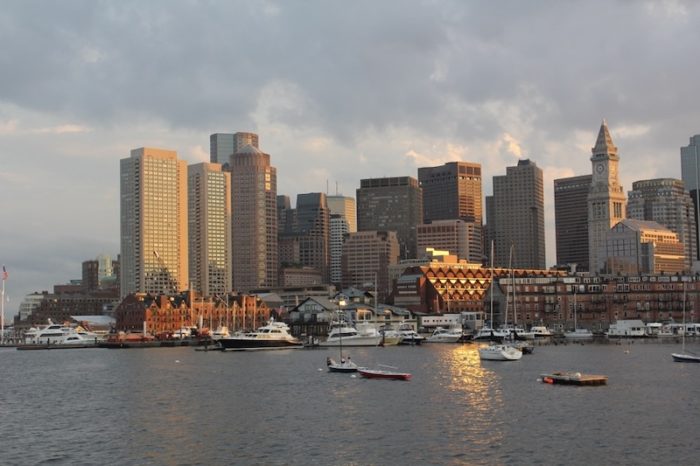
By experience, Real Estate Professionals are THE leading pivot point for the client when it comes to all aspects related to the purchase, sale or remodel of a home. The Real Estate Advisor is the single most trusted person to the client–the one whom the client comes to for answers to questions ranging from purchase and home sale costs to design and construction technology, costing, and methodology. From the subject of a proper initial offer on a home to a recommendation for a trustworthy wallpaper subcontractor–the client looks to the real estate advisor for answers on ALL things home related. After all, the client has put his life, family, and home in the hands of the agent and relies on this trust across the entire landscape involved with buying, selling, and creating a home.
There are many times a real estate professional will be asked for direction and recommendations as to planning and design costs, remodelling costs, and recommendations for reliable professionals across all ranges of disciplines, including architectural planning and interior design to contractors and builders. Real Estate Advisors are asked to advise on local supermarket choices, schools for children, and reliable decorators. The real estate professional is THE primary point of trust for the client around which all other disciplines evolve.
So what are the leading Real Estate Advisors in Boston advising their clients as regards Home design & remodelling?
Boston’s leading real estate advisors are advising their clients to use Architectural Design Build when designing and remodeling a home. Architectural Design Build is the natural course of planning and building as has been done for thousands of years–where all planning and construction is done by one fully accountable creative team responsible for the entire project from beginning to end. The advocate of the client the entire time–the Architect and Builder are housed in the same creative firm and there is no arbitrary fracture or divide of irresponsibility.
Gibson Sotheby’s Stephanie Archung shared the following insight:
“I recommend design/build to my clients all the time.
Design Build is always a topic of conversation with my clients. My clients ask me all the time, how much would it cost to add a 2 or 3 car garage with a master suite over it, or how much would it cost to bump out the back of the house and expand the kitchen and add a family room? With inventory being so low I have clients looking at homes below their budget with the thought they will expand or completely renovate. I had clients looking in Newton for a 3,500 sf. ft. home with 3 car garage. We found a small 2 bedroom home that came with the adjacent vacant lot.
My advice was to explore Design/Build firms because of the advantage of being able to meet with both the architect and contractor at the same time. I explained to them that they had a sizable budget but it would be a mistake to hire an architect and then take the plans to a builder for the simple reason that the architect is more creative and they will design the most beautiful home and they will get excited about that beautiful home and then the contractor will come in and burst their bubble by telling them that it would cost 2 to 3 times more than their budget. This usually gets their attention–then I explain that with a Design Build firm the architect and contractor are working together from the start and the contractor can make sure that the architect is designing a home that will meet the clients needs and budget. There won’t be any surprises because everyone will meet before the project starts. I also explain that a design build firm will really try to understand their lifestyle and how they want to live and they will be able to make recommendations that they may not have thought about. They will be able to custom design a home that completely suits their needs.”
Stephanie Archung, REALTOR®
Real Estate Advisor
(M) 508.498.2521 | (O) 781.329.8008
Gibson | Sotheby’s International Realty
745 High Street, Westwood MA 02090
stephanie.archung@gibsonsir.com
Comparative Modes of Planning and Building
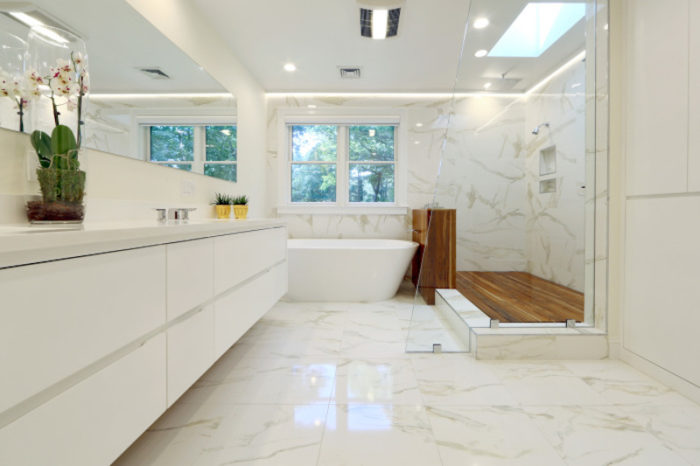
Design-Bid-Build is the process which has been introduced over the past 150 years or so whereby you hire an architect to draft plans and design your project–to then have it bid out to contractors seeking to perform the project. This approach has many liabilities for the client due in no small part to the fragmented spheres of responsibilities which exist. There is no single person or entity fully accountable to the client for the entire project’s success. Thus you can have impractical and expensive design work, impractical planning, numerous change orders, shoddy craftsmanship and projects which are off timeline and over budget–as they often are. In the end the client can be left damaged. You or someone you know may have experienced this in the past.
Architectural Design Build is the preferred option if you want to save time and money, reduce stress and eliminate a fragmented sense of project responsibility in the professionals working for and with you. Design Build is a model which stresses single-source accountability with the creative design, planning, and remodeling executed start to finish by one firm. It’s actually a simple concept to understand and embrace. This natural course of planning and building embraces the age-old role of Architect as Master Builder, which has been the case for thousands of years throughout history.
The word “Architect” in fact comes from Greek Arkhi – Master and Tekton – Builder. Architect = Master Builder and throughout history has traditionally been so up until the mid-19th century.
Design Build is turned to by professionals, families, and individuals as the cutting edge of efficiency, aesthetics, practicality, and accountability when it comes to designing and remodeling a home. This approach packages architectural design and interior design services with highly-skilled and artisan-level building and remodeling services. This natural synthesis makes for a simple, efficient, and accountable creative process followed by a streamlined and responsible execution process–reducing cost, time of execution, and client stress throughout. In the Design Build modality, the client is dealing solely with one fully accountable firm.
Per Architect Outsourcing,
“Owners using the traditional project delivery method will first have an architect complete the building design and then request bids from contractors for construction. This method can be quite risky to the owner since the designer and contractor are not working together or communicating to complete their portion of the project. This lack of collaboration often leads to increased costs and lengthy delays in completing the project.” www.architectoutsourcing.com/blogs/has-design-bid-build-become-obsolete/
Tara Callinan of Fieldwire.com adds as follows:
“Construction project cost overrun has become so common that they’re basically expected in the industry—largely due to over-budget and over-schedule construction projects. In fact, worldwide management consulting firm McKinsey & Company estimated in 2016 that large construction projects are typically completed 80 percent over budget and take 20 percent longer than originally scheduled.”
Protecting Client Investment With Architectural Design Build
Examples of Design Build in Boston
Here are several examples of Architectural Design Build projects throughout Boston where the full Architectural planning, design, and remodel were done in one full-service package from start to completion–saving the client time, reducing cost, and eliminating stress.
Chestnut Hill Sinclair Home
The clients wished for a serene space in their Chestnut Hill home that they could begin and end their hectic days in. Tapping into the outdoor showers of The Cape, where they also own a home, we decided to bring some teak into the wet area, accompanied by a skylight to catch the morning light for an “outdoor feel” inside of the suburbs. The shower deck is supported by a product that is marketed for roof deck systems. It allows the deck to be removed to clean beneath it periodically, and to eventually be replaced after the marine grade varnish that protects the teak begins to wear.
www.nedesignbuild.com/portfolio/master-bathroom-chestnut-hill/
Somerville Whole-Home Design & Remodel
We completed a two story addition for this Somerville-based family, including four bedrooms, two bathrooms, a master suite, and several other lifestyle improvements such pull-out under-stair storage, and a wrap-around bench in the entryway! This Design Build remodel increased the square footage, the overall livable space within the home, and the property value overall.
www.nedesignbuild.com/portfolio/somerville-addition/
Cambridge Kitchen & Solarium
The kitchen and solarium areas were opened up and combined, with the access to the adjacent dining area reconfigured. That doorway was created with an arch that is replicated in another area of the home. The finishes and design chosen for the space has sleek and modern cabinets, but integrates warmer touches from reclaimed white oak details which are seen in the custom L shaped banquette and breakfast nook, as well as the island, and the lighting fixture selections. There are classic details peppered into an otherwise modern design.
www.nedesignbuild.com/portfolio/cambridge-kitchen-remodel/
These Boston Neighborhoods are Leaders in Real Estate Value and are Trendsetting with Design Build Innovation
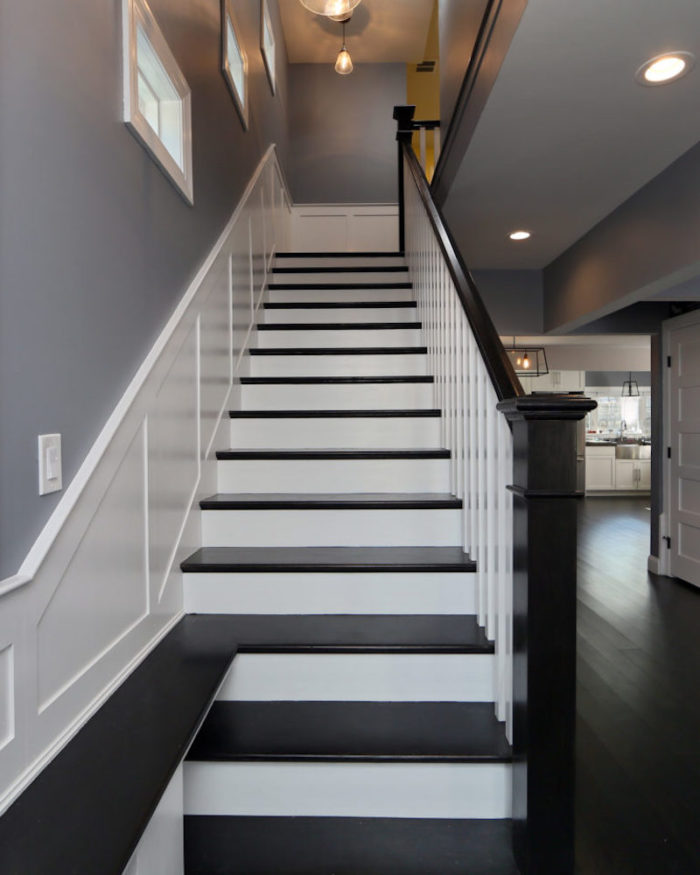
Wellesley
A beautiful town with a population of nearly 28,000 located approximately 15 miles west of Boston, bordered on the north by Weston. Wellesley is a town composed of 9 neighborhoods and is considered one of the wealthiest towns in Massachusetts and in the top 50 wealthiest towns in the entire United States. (Per Boston Magazine, Wellesley ranks first in the United States in percentage of adults with at least one college degree.) The current median listing price for a home on the market in Wellesley is 1.6 Million USD, with 85 homes currently listed for sale.
Weston
Weston is a semi-rural Boston residential suburb with a population of slightly over 11,000. Weston is directly north of Wellesley and about 15 miles from Boston. Composed mostly of single-family homes, tranquil Weston is stunningly beautiful and has over 2,000 acres of preserved parks, wetlands, fields, and forests with over 90 miles of trails for hiking, horseback riding, and cross-country skiing. In 2019 Bloomberg ranked Weston as the wealthiest zip code in Massachusetts and 11th wealthiest in the entire United States–Boston sports greats such as John Havilcek, Robert Parish, Bobby Orr, and former Red Sox great David Ortiz (Big Papi) call Weston home. Weston currently has 74 homes on market, ranging from $595,000 to $15,900,000 with a $1,900,000 median listing price.
Chestnut Hill
Chestnut Hill is an upscale village located six miles West of Boston with a population of slightly over 6,000. Chestnut Hill is not an incorporated municipality–but rather is an exclusive neighborhood comprising sections of Brookline, Newton, and Brighton. Average home sale price in Chestnut Hill last month was 1.8 million–an increase of 41% from last year.
Financial District
This is the hyper finite district located downtown near Boston’s Government Center and close to the waterfront–definitely an urban feel with lovely brick architecture and composed mostly of elegant Condos. The average home sale price in the Financial District last month was $625,000, but the majority of the listings are significantly higher than this, exceeding 1 million USD.
Beacon Hill & the Common
Located by the Gold Dome of the State House. Boston Common is the oldest public park in the United States. Outdoor concerts, jogging paths, and outdoor skating in the winter. Think narrow streets, brick sidewalks, actual gas street lamps, and beautiful brick townhomes and federal style row houses with a strong colonial vibe, some of the homes dating back to the late 1700s. Beacon Hill ranges from Cambridge Street to Boylston Street and is bordered on one side by the lovely Charles River. ‘Beacon Hill’ also refers to the Mass State Government and many residing here are State Senators and Congressmen and those working in State Government and the Financial District. Louisburg Square is considered one of the most desirable sections of residential real estate in Massachusetts and picturesque Acorn street with its colonial, Paul Revere-like vibe is one of the most photographed streets in all of the United States. The home median listing and sales price in Beacon Hill is currently 1.3 million USD, with 74 homes currently on the market for sale.
Back Bay
In a city teeming with life, culture, identity, and history, Back Bay stands out as an iconic locale with its own aesthetic and is truly one of the most beautiful parts of Boston. Back Bay is not a city or town in itself–but rather an affluent and intensely desirable neighborhood in the center of the City of Boston spanning an area of land that was once quite literally one of Boston’s bays and a part of the Atlantic Ocean.
Back Bay is a rectangular grid of classic aesthetics with a regal undercurrent of power. To properly orient you with a quick mental tour–there are five major streets running East to West: Beacon Street, Marlborough Street, Commonwealth Avenue, Newbury Street and Boylston Avenue. Streets running North to South are titled alphabetically: Arlington, Berkeley, Clarendon, etc. through Kilmarnock street. So the heart of Boston’s Back Bay is literally 5 streets wide by 11 streets long–an elegant neighborhood literally crafted from the Atlantic. That gives you an overview of the layout of Back Bay–this geographic area does extend out slightly from this rectangular center, but it is finite, exact, and well-planned. The vibe is one of upscale, comfortable sophistication. Median listing price in Back Bay is currently 1.4 million USD and there are 160 homes for sale at this time.
Cambridge
There is a distinct beauty to Cambridge, Massachusetts. Just across the Charles river from Boston, the brick exteriors alone give it the homey feel of England or Europe. The Charles River separates Cambridge from Boston, and as a resident you can feel the natural energy the river provides–Memorial Drive runs alongside the Charles and one can often see the collegiate or recreational rowers out on the water making their way. It is an aesthetic blend of urban meets natural.
Cambridge has an educational air to it–you can feel it in the vibe. Bookstores, nice sweaters, good coffee, and a sense that its residents have a worldy appreciation for knowledge, education, innovation, and a general excitement for what’s going on in the world. Cambridge is home to Harvard University, The Massachusetts Institute of Technology (MIT), Lesley University, and Hult Business School. Both Harvard and MIT are ranked in the top 10 internationally and when the school year begins, the city comes ALIVE. You can feel the vibrant infusion of anticipation as tens of thousands of students arrive from all over the world. This in itself makes Cambridge intensely international in an extremely unique way.
Cambridge comprises 5 squares and 13 neighborhoods which are actually quite distinct and offer an array of cultural realities. Cambridge is a town of over 110,000 but it feels smaller–a small town feeling that lends a sense of familiarity. You feel as if you could get to know many of the residents in the course of living there and interacting, dining at the many delicious restaurants, shopping in the shops and boutiques, or buying organic groceries at the multiple farmers markets or co-ops.
Median listing price in Cambridge is currently 1.2 million USD and there are 151 homes for sale.
Somerville
Middlesex County in Massachusetts is home to the town of Somerville, a long-standing suburb of Boston with a population north of 80,000. Cambridge is directly south of Somerville and the two towns are rivals in all things sports. Somerville is a city of 4.11 square miles and 81,360 people as of 2019–making Somerville New England’s most densely populated Municipality. Despite this, it’s beautiful and does not look or feel crowded.
Somerville was originally settled in 1629–its first record of European occupation was a man named John Woolrich, a known Indian Trader who arrived in 1630 and settled near what is now Dane Street. The city grew slowly and nearly 150 years later Somerville had approximately 500 settlers. As a town proper, Somerville was formally established in the mid 1800s when it separated from Charlestown. Somerville houses Tufts University–which in part helps define Somerville, its culture, and vibe.
Median home listing price in Somerville is currently $949,000 USD and there are 161 homes for sale.
Brookline
Brookline was first settled in 1638 and incorporated in 1705 as an actual town–it has the distinction of being the birthplace of John F. Kennedy, the 35th President of the United States. The population is nearly 60,000 and Brookline spreads over nearly 7 square miles at a distance approximately 5 miles from Boston and is a mixture of apartments, multi-family and single family homes. As you move away from Boston, Brookline becomes increasingly wooded–stunning in the Fall.
It’s where Tom Brady and Gisele called home during his long tenure with the Patriots–their picturesque 12,000+ square foot Brookline Mansion is currently on the market for a cool 34 million–Beth Dickerson of Sothebys has the listing if you are interested.
The Median listing price in Brookline is currently $1.3 million USD and there are 194 homes for sale.
Newton
Newton was originally settled in 1630 and today is a town of 80,000 occupying 18 square miles approximately 7 miles from downtown Boston–Newton is actually composed of 13 neighborhoods and is bordered by Wellesley and Weston to the West. Newton is ranked among the 10 top small cities to live in within the United States and is beautifully wooded with access to community farms as well as easy access to downtown Boston via the Mass Pike.
The median sale price of a home in Newton, Mass is 1.3 million USD and there are 243 homes on the market currently in Newton.
South End
Established in 1728, the South End is culturally rich, trendy, and filled with artisans, artists, and creatives–additionally there are over 80 eateries in the South End as well as numerous boutiques and unique retail shops. Union Park is a beautiful and highly desired South End residential area surrounded by stunning brick townhomes with custom wrought-iron work that evokes comparisons to London. New England Medical Center is close by and the South End is home to the BCA (Boston Center for the Arts) as well. (The South End is also extremely dog friendly with many eateries and shops allowing dogs on the premises.)
Median home listing price in the South End is 1.1 million USD and there are 230 homes on the market.
oOo
Refs:
https://www.usnews.com/best-colleges/ma
https://www.builtinboston.com/2016/09/08/boston-fintech-companies-you-should-know
https://news.mit.edu/2018/surgical-technique-improves-sensation-control-prosthetic-limb-0530
https://www.bostonmagazine.com/health/2013/11/26/prosthetics-research-boston-arm/
https://biomech.media.mit.edu/about/
https://genetics.med.harvard.edu/sinclair/people/sinclair.php
https://www.zippia.com/company/best-finance-companies-in-boston-ma/
https://www.zippia.com/state-street-careers-10823/
https://www.realtor.com/realestateandhomes-search/Wellesley_MA/overview
https://en.wikipedia.org/wiki/Wellesley,_Massachusetts
https://patch.com/massachusetts/wellesley/richest-town-massachusetts
https://en.wikipedia.org/wiki/Weston,_Massachusetts
https://www.youtube.com/watch?v=jmGFRsNhxBo
https://www.zillow.com/chestnut-hill-newton-ma/home-values/
https://www.redfin.com/neighborhood/186297/MA/Newton/Chestnut-Hill/housing-market
https://www.redfin.com/neighborhood/966/MA/Boston/Financial-District/housing-market
https://www.youtube.com/watch?v=uCo3Bs9Malw
https://www.youtube.com/watch?v=27YP5eq4Kjs
https://www.realtor.com/realestateandhomes-search/Beacon-Hill_Boston_MA/overview
https://www.realtor.com/realestateandhomes-search/Back-Bay_Boston_MA/overview
https://www.realtor.com/realestateandhomes-search/Cambridge_MA/overview
https://en.wikipedia.org/wiki/Cambridge,_Massachusetts
https://en.wikipedia.org/wiki/Somerville,_Massachusetts
https://www.realtor.com/realestateandhomes-search/Somerville_MA/overview
https://www.realtor.com/realestateandhomes-search/Brookline_MA/overview
https://www.youtube.com/watch?v=Z02Cuxpyp-k
https://en.wikipedia.org/wiki/Newton,_Massachusetts
https://www.realtor.com/realestateandhomes-search/Newton_MA/overview
https://www.realtor.com/realestateandhomes-search/South-End_Boston_MA/overview
https://www.fastcompany.com/90418816/how-the-real-estate-industry-is-innovating-from-the-ground-up
